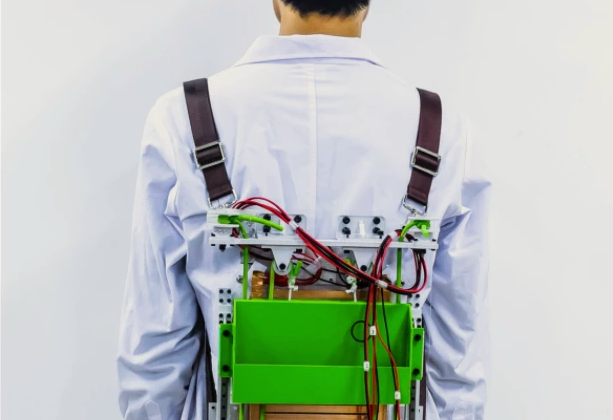
FUTURE TECH
The proof of concept design not only lightens the load but also uses human motion to generate electricity
I still remember the good old early school days, when we used to carry a heavy backpack with lots of books in it. Carrying such a load was perhaps the most uncomfortable part of going to school. Hikers & on-foot soldiers carry even bigger loads for their expeditions. Life would be so much easier for all these people if their loads get a little lighter.
Researchers at China’s Tsinghua University have now proposed an experimental design for a backpack that not only makes loads feel about 20% lighter but also harvests energy from human movements to power small electronics. The team believes that this prototype could be especially useful for athletes, explorers & disaster rescuers who work in remote areas without electricity.
Talk about not wasting the mechanical energy and putting it to work. Previously, researchers have used triboelectric nanogenerators (TENG) for this purpose — TENG is basically a small device that converts mechanical energy into electricity. These nanogenerators were then used to develop energy-harvesting backpacks. But they had a limitation of producing relatively low power outputs. The novel proposal not only provides a system of electricity generation but also lightens the load along with shock absorption.
The Tsinghua backpack has a main section that slides up and down rails while suspended by two elastomer cords. The two cords are stretched and shrank to keep the bag stable as the wearer walked. According to the tests conducted, the setup caused a 21.08% reduction of vertical force on the wearer — precipitated by a reduction in the vertical oscillation of the load by 28.75%.
In addition to this, movement between the frame of the backpack and its load during walking led to a 14% efficiency in the way TENG converted mechanical energy into electricity. It produced enough electricity to power LEDs, an electric watch, and fluorescent tubes.
Next steps would involve the researchers scaling up the technology for a commercial version that can charge an integrated battery. They also plan to increase the energy efficiency of the device so that it can eventually power up small-scale wearable and portable electronics, GPSs & health care sensors.
Complete Research was published in the Journal ACS Nano.
